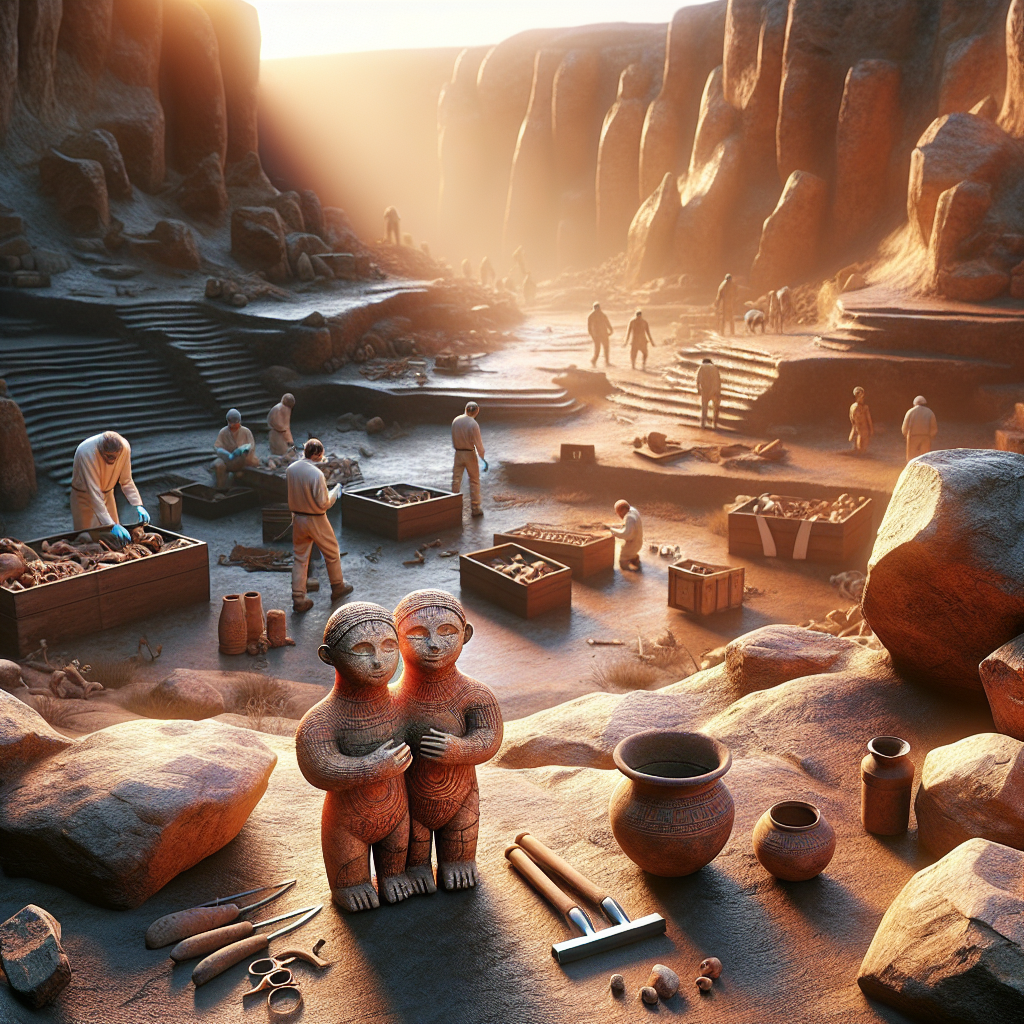Conjoined Twins and Ancient Heads: 19,000-Year-Old Figurines Unearthed in Turkey
Archaeologists led by Ankara University have unearthed the oldest known stone human figurines of Anatolia, shedding light on the ancient craftsmanship and beliefs of our ancestors. These remarkable artifacts, dating back an astounding 19,000 years, were discovered at the Boncuklu Tarla site in Turkey. The figurines depict conjoined twins and severed heads, offering a fascinating glimpse into the artistic and symbolic expressions of the early inhabitants of the region.
The discovery of these unique figurines challenges our understanding of prehistoric art and culture. The conjoined twins figurine, in particular, is a rare find in the archaeological record. This intricate piece showcases the skill and creativity of the ancient craftsmen who sculpted it with remarkable detail and precision. The symbolism behind the conjoined twins remains a mystery, prompting experts to speculate about its possible significance in the spiritual or cultural beliefs of the time.
In addition to the conjoined twins figurine, the excavation also revealed several stone heads, some of which were found detached from their bodies. These severed heads, with their enigmatic expressions and intricate carvings, offer valuable insights into the religious and funerary practices of the ancient Anatolian people. The meticulous craftsmanship displayed in these artifacts indicates a sophisticated understanding of stone carving techniques and a deep reverence for the human form.
The Boncuklu Tarla site has long been a treasure trove of archaeological finds, with previous discoveries including stone tools, animal figurines, and architectural remains. However, the recent unearthing of the conjoined twins and severed heads figurines has captured the attention of the archaeological community worldwide. These exceptional artifacts not only expand our knowledge of Anatolian prehistory but also raise intriguing questions about the cultural practices and beliefs of the people who created them.
The significance of these figurines extends beyond their artistic and historical value. They offer a window into the minds of our ancient ancestors, providing clues about their worldview, social structures, and religious practices. By studying these artifacts, archaeologists can piece together the puzzle of human evolution and cultural development in the Anatolian region during the Upper Paleolithic period.
As we marvel at the intricacy and symbolism of the conjoined twins and severed heads figurines, we are reminded of the enduring legacy of our ancestors. These ancient artifacts serve as a testament to the creativity, ingenuity, and spirituality of the early inhabitants of Anatolia, leaving a lasting impression on our understanding of human history and cultural heritage.
In conclusion, the discovery of the 19,000-year-old stone figurines in Turkey represents a groundbreaking find in the field of archaeology. These remarkable artifacts offer a rare glimpse into the artistic prowess and symbolic richness of the ancient Anatolian people, inviting us to reflect on the mysteries of our shared past. The conjoined twins and severed heads figurines stand as silent witnesses to a bygone era, sparking curiosity and fascination among researchers and enthusiasts alike.
#Archaeology, #Anatolia, #PrehistoricArt, #CulturalHeritage, #AncientDiscoveries












